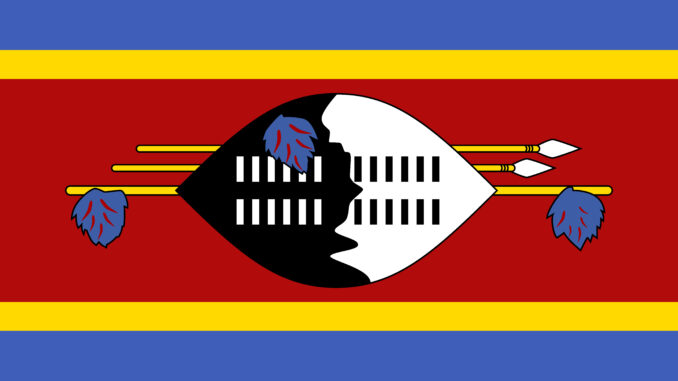
Red, yellow, and blue are common in flag design because they are bright, bold, and easy to recognize. Stripes are also the most common flag design because it was easy to sew three pieces of fabric together – the simplest option in the days before sewing machines.
There are quite a few countries who have flags that employ red, yellow, and blue stripes. Our list includes both horizontal and vertical stripes, as well as those flags that also include a coat of arms. We won’t be including nations with flags that use other colors, aside from minimal amounts of black or white.
There are 9 countries with flags that employ red, yellow, and blue stripes:
- Andorra
- Armenia
- Chad
- Colombia
- Ecuador
- Eswatini
- Moldova
- Romania
- Venezuela
Read on to learn a little more about each of these flags and the countries they represent.
1. Andorra
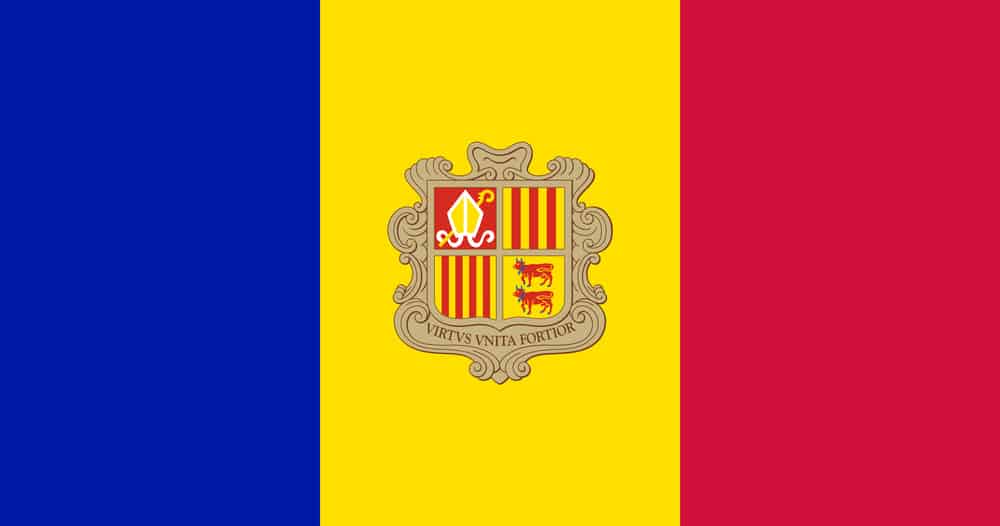
This tiny European microstate is located in the Pyrenees Mountains between France and Spain. It is considered the sixth-smallest independent European nation, with a total land area of 181 square miles and a population of just over 79,000 as of 2022.
Its flag consists of three vertical stripes of equal width: blue on the left, yellow in the center, and red on the right. The country’s coat of arms sits squarely in the flag’s center, over the middle yellow stripe. The original tricolor was designed by Napoleon and declared the national flag in 1866.
2. Armenia
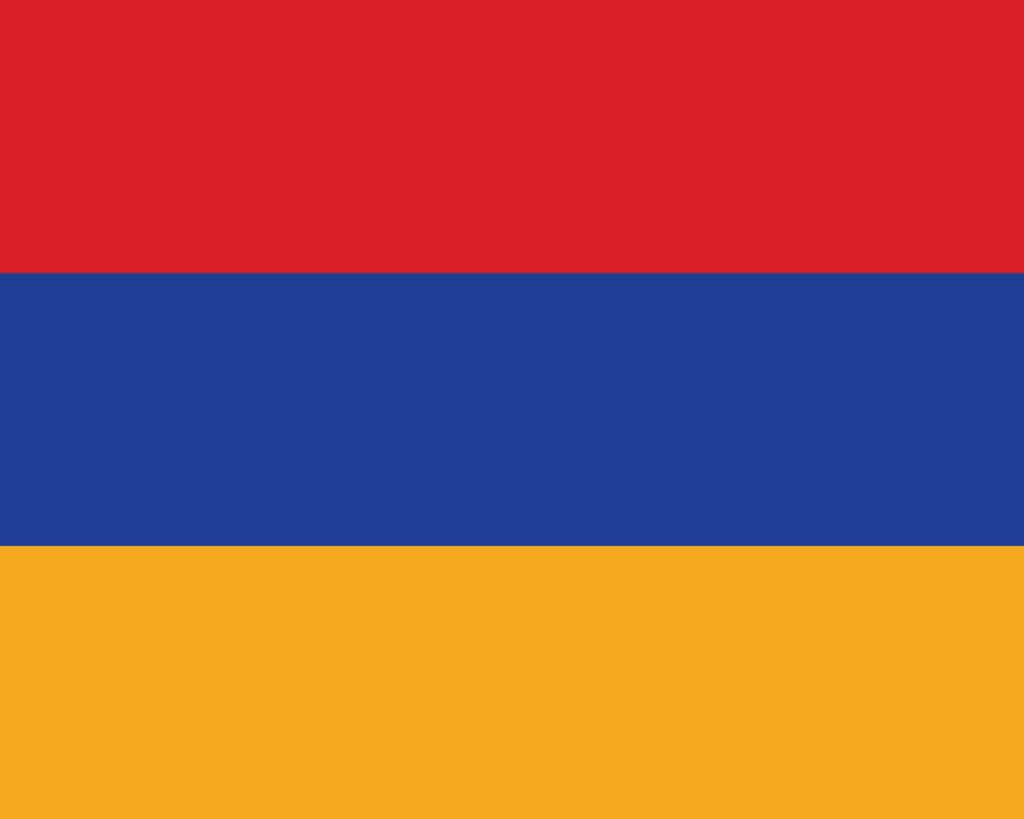
This landlocked country in the mountains of western Asia lies east of Turkey and south of Georgia. Its flag is one of the simplest on our list, composed only of three horizontal stripes devoid of a coat of arms or any ornamentation: red at the top, blue in the middle, and yellow on the bottom.
Armenia first adopted its flag in 1918 following World War I, but it fell out of use when the country became part of the USSR and re-adopted the tricolor after the fall of the Soviet Union in 1990.
3. Chad
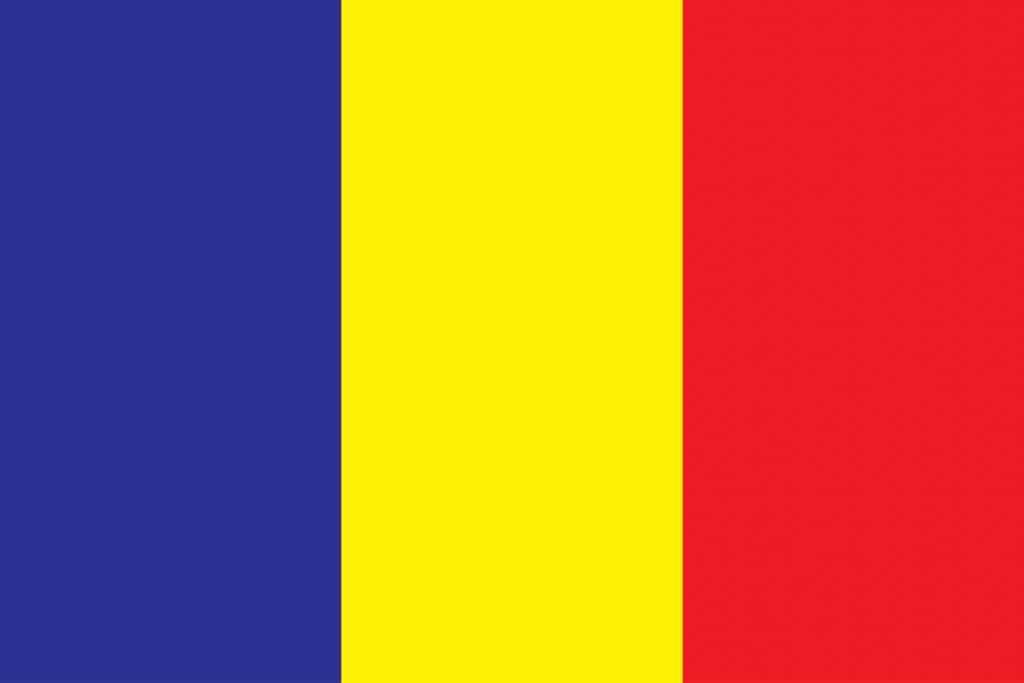
The flag of this African nation has created a lot of controversy with it being nearly identical to the flag of Romania – the only difference being that Chad’s flag uses a slightly darker shade of blue than its eastern European counterpart. Romania’s adoption of this classic tricolor predates Chad by nearly a century, as Chad declared its current flag the national flag in 1959.
The blue stripe on Chad’s flag represents hope as well as the sky; the gold stripe symbolizes the desert and the bright African sun; and the red stands for the blood of those who died fighting for Chad’s independence.
4. Colombia
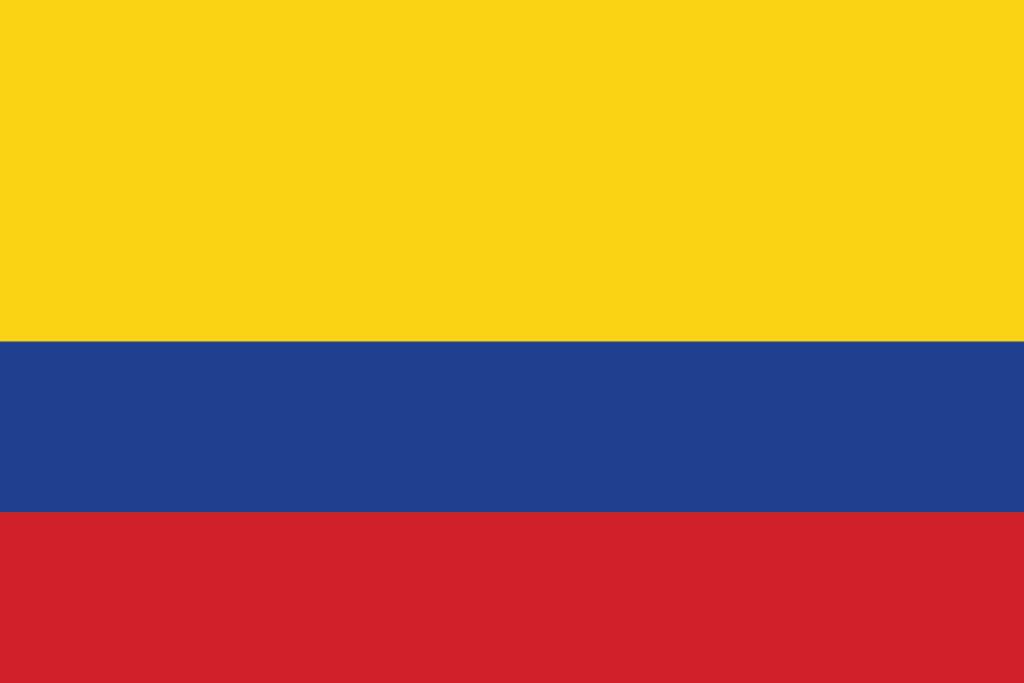
This large South American country is on the northern coast of the continent, bordering both the Pacific Ocean and the Caribbean Sea.
The Colombian flag consists of three horizontal bands: yellow at the top, blue in the middle, and red at the bottom. The yellow band, however, is twice the width of the red and blue bands and makes up the top half of the flag.
Colombia’s current flag – which is unique in that its stripes are not of equal width – has represented the country to the international community since 1861.
5. Ecuador
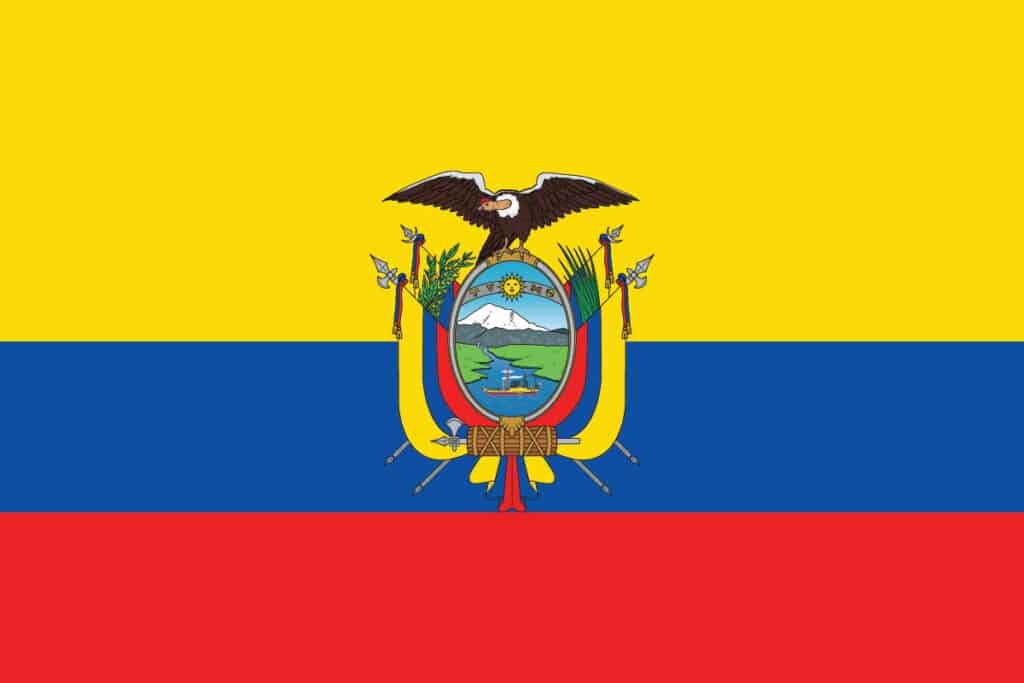
The second of the three South American flags on our list, Ecuador’s tricolor is identical to that of Colombia: three horizontal bands of yellow, blue, and red with the added Ecuadorian coat of arms.
The top yellow band makes up half of the flag’s width, while the blue and red bands are included in the flag’s bottom half, with red at the bottom border.
Ecuador’s coat of arms is in the flag’s center, overlapping both the yellow and blue bands. The coat of arms depicts a condor – with wings spread – over a scene from Ecuador’s history. Weaponry dating to the Spanish conquistador era is also present in the seal’s design.
Ecuador’s flag was adopted in 1860.
6. Eswatini
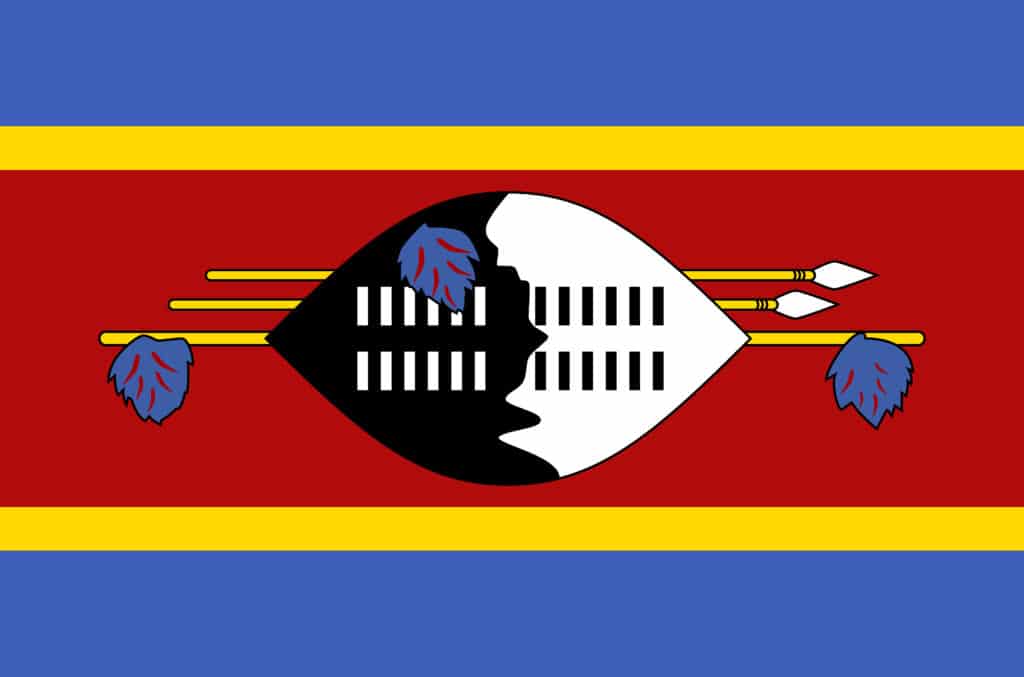
This tiny country in southern Africa was known as Swaziland until 2018, when the name was changed to Eswatini. It is the last absolute monarchy in Africa and has a diverse geography, despite the country having a total area of 6700 square miles.
The flag is more elaborate than the other entries on our list: five horizontal bands make up the flag, with a large black and white Nguni shield and two spears in the foreground.
The flag’s bands are the following colors, listed from top to bottom: light blue, yellow, red, yellow, light blue. The center red band is the widest, making up half of Eswatini’s flag’s total width. The light blue bands are each twice as thick as the narrow yellow bands.
7. Moldova

The flag of this eastern European country is identical to Romania save for the national coat of arms in the foreground. It features a traditional vertical tricolor, with the three bands of equal width: blue (left), yellow (center), and red (right).
Moldova’s current flag was declared the national flag in 1990, after the fall of the Soviet Union, of which Moldova was a part.
The Moldavian coat of arms – which sits in the center of the flag over the center yellow band – depicts a gold eagle with a red and blue shield on its chest. The shield displays an aurochs surrounded by the traditional Moldavian symbols of a rose, a crescent, and a star.
8. Romania
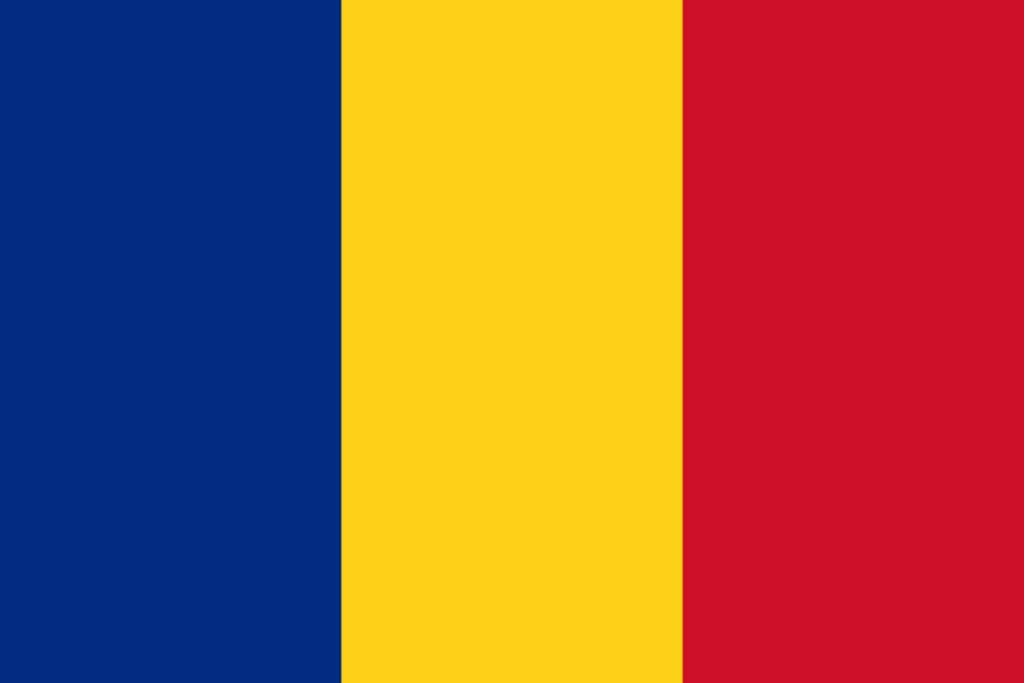
The flag of this country in eastern Europe is a simple one, consisting of three vertical bands of blue (left), yellow (center), and red (right).
Much international discussion surrounds the flag’s similarity to that of Chad. However, the Romanian flag predates the one of Chad by over a century, as Romania first used the flag in 1834 and declared it their national flag in 1866. The only difference between the two flags is that Chad uses a slightly darker shade of blue in their design.
9. Venezuela
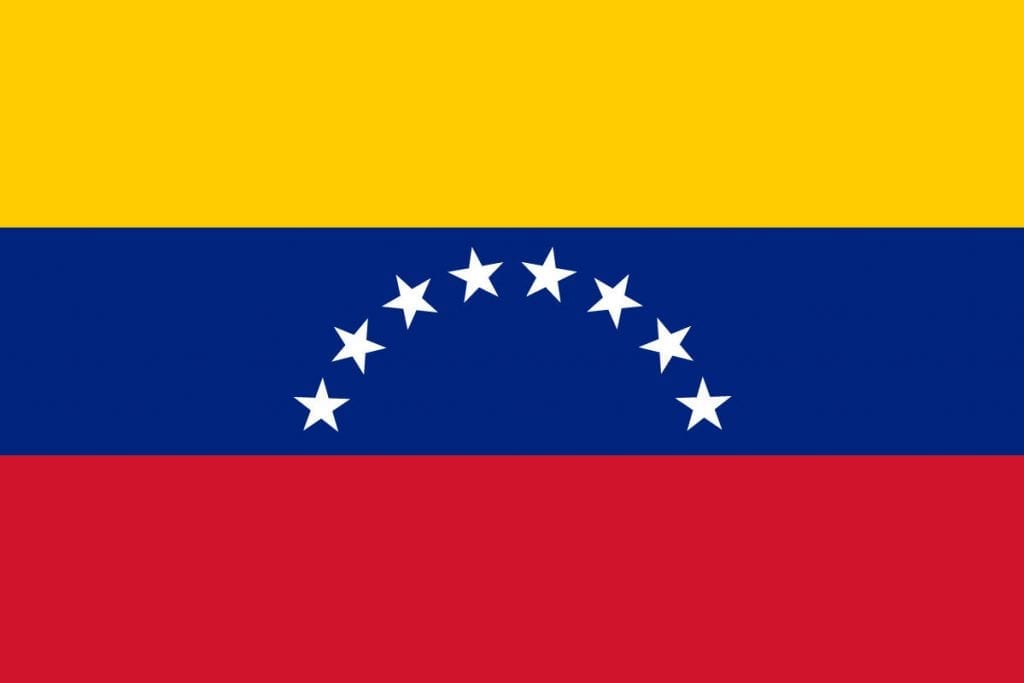
The horizontal triband of this South American nation consists of three bands of equal width: yellow at the top, blue in the middle, and red bordering the bottom. Eight white five-pointed stars form an arc in the center of the flag, over the center blue band.
Venezuela first adopted this flag in 2006, but the design itself originates from the country’s 1811 fight for independence.
